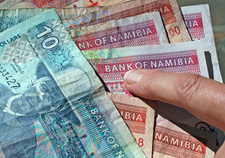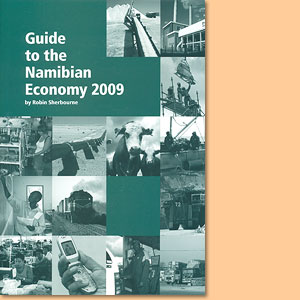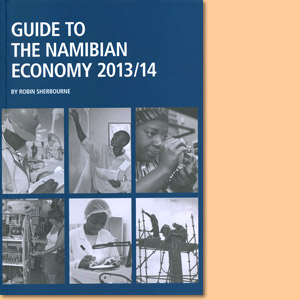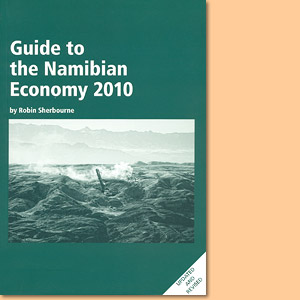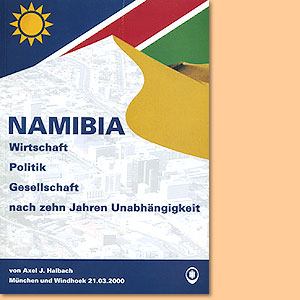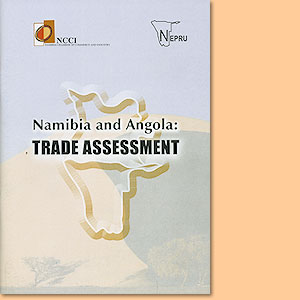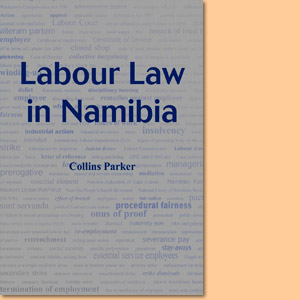Guide to the Namibian Economy 2009, by Robin Sherbourne
Robin Sherbourne's Guide to the Namibian Economy 2009 is not a dry and dusty economics tome. There is unlikely to be another book on the Namibian economy that is as detailed and accessible.
Namibia's economy has a number of features that make it especially challenging to economists and policymakers. Every economy is different but Namibia's is more different than most. This presents special challenges, not only to policymakers and economists but to all Namibians. Here's why. As far as we can measure, income inequality in Namibia is greater than any other country in the world including South Africa and Brazil. In the early 1990s the richest one percent of Namibians consumed more in value than the poorest 50 percent combined. Ten years later this had hardly changed. Government has the difficult job of deciding to what extent this gap can be narrowed by transferring income from the richest to the poorest without destroying the incentives to produce by the already better-off. Namibia has locked itself into a currency peg arrangement with neighbouring South Africa, an economy over 40 times larger. This means that important economic variables such as prices, interest rates and exchange rates are determined primarily by policymakers in South Africa. Government has to continually monitor whether the benefits of this arrangement outweigh the costs. Developing countries usually have low saving rates and high investment requirements so savings have to be imported from the rest of the world to finance investment. Thanks partly to the way pensions are organised for its enormous public sector, Namibia generates more savings than it can productively invest, a large proportion of which flows to South Africa to be invested on the Johannesburg Stock Exchange. Government has to balance the desire to increase the amount of savings that are invested locally with the need to provide an adequate return for savers. The Namibian population is small and dispersed over a vast area making the provision of high-quality public services expensive. It also means markets are small and expensive to supply as well as making it more difficult to foster genuine competition among suppliers. A large part of the land is of poor quality and this makes development strategies based on increasing rural incomes through agriculture that much harder to achieve. These characteristics mean that Namibia's development strategy has to strike the balance between assisting rural populations whilst at the same time coping with the inevitable flow of people from the countryside to the towns in search of better lives. The economy depends greatly on a few principal generators of incomes including diamonds, uranium, meat, and beer. This may present problems for those with a strong moral disposition who see diamonds as an unnecessary luxury for the rich, uranium as a dangerous source of energy, meat as an unhealthy and inefficient way of producing food, and beer as a social evil. Namibia adopted a market-based economic system and entrenched certain economic and other freedoms in its Constitution after a long and bloody liberation struggle assisted primarily by countries with very different economic systems. Arguably Namibia's economic system was chosen more out of political pragmatism than conviction, something which is reflected in Government's rather ambivalent policy toward private sector development. But the challenge Namibia has accepted remains almost unique, namely to increase the incomes of the poorest and achieve prosperity without destroying fundamental freedoms and endangering the productive capability inherited from the troubled past. (...)
This is an extract from the book: Guide to the Namibian Economy 2009, by Robin Sherbourne.
Title: Guide to the Namibian Economy 2009
Author: Robin Sherbourne
Publisher: Institute for Public Policy Research
Windhoek, Namibia 2009
ISBN 99789994568895 / ISBN 978-99945-68-89-5
Softcover, 17x24 cm, 380 pages, several tables and bw-photos
Sherbourne, Robin im Namibiana-Buchangebot
Guide to the Namibian Economy 2009
This Guide to the Namibian Economy 2009 is the culmination of at least ten years of work.
Guide to the Namibian Economy 2013/2014
Guide to the Namibian Economy 2013/2014 serves as an invaluable source of information and insights.
Guide to the Namibian Economy 2010
There is unlikely to be another guide to the Namibian economy actual as 2010 that is as detailed and accessible.
Weitere Buchempfehlungen
Namibia. Wirtschaft, Politik, Gesellschaft
Wirtschaftliche Veränderungen zehn Jahre nach der Unabhängigkeit Namibias
Trade Assessment: Namibia and Angola
Explanation and prediction about Namibia current and future trade patterns
Labour Law in Namibia
Labour Law in Namibia is the first comprehensive and scholarly text to analyse the Labour Act of 2007, and how it affects the common law principles of employment relations.
Knowledge lives in the lake. Case studies in environmental and customary law from southern Africa
Knowledge lives in the lake: Case studies in environmental and customary law from southern Africa presents research within the framework of the international Biodiversity Monitoring Transect Analysis in Africa (BIOTA) Project.

